Luna Talk | Managing Capacity at Work 如何管理工作效能
Intro
Today I’d like to talk about a topic that has been a major puzzle for me over the last six months: how to manage capacity at work.
What is work capacity?
Work capacity refers to how much time and energy we can devote to our jobs.
Why it can be a problem?
Although we may work the same hours and days, many things can change, such as the company’s growth, our increased seniority, a different role, higher expectations, or solving new types of problems. Additionally, as we grow older, our life stages change, and we shoulder more responsibilities in both work and life.
For me, the most challenging part is my dear little boy, Andy. Due to COVID-19, we were separated for three years, which provided me with extra capacity to focus on my work. However, when he returned to Australia six months ago, I was thrilled but also frightened.
- How am I going to continue performing?
- How can I continue growing while shouldering more responsibilities at home and work?
Unfortunately, I haven’t found a perfect answer, and I know that many other working parents struggle with the same issues. However, I have learned to embrace reality and live with imperfections while still striving to improve daily.
There are always things within our control, and the one thing I cannot stop doing is to keep thinking, reflecting, and challenging myself to be a better version tomorrow.
Today, I’m going to share my current approach to managing my work capacity, a four-step framework.
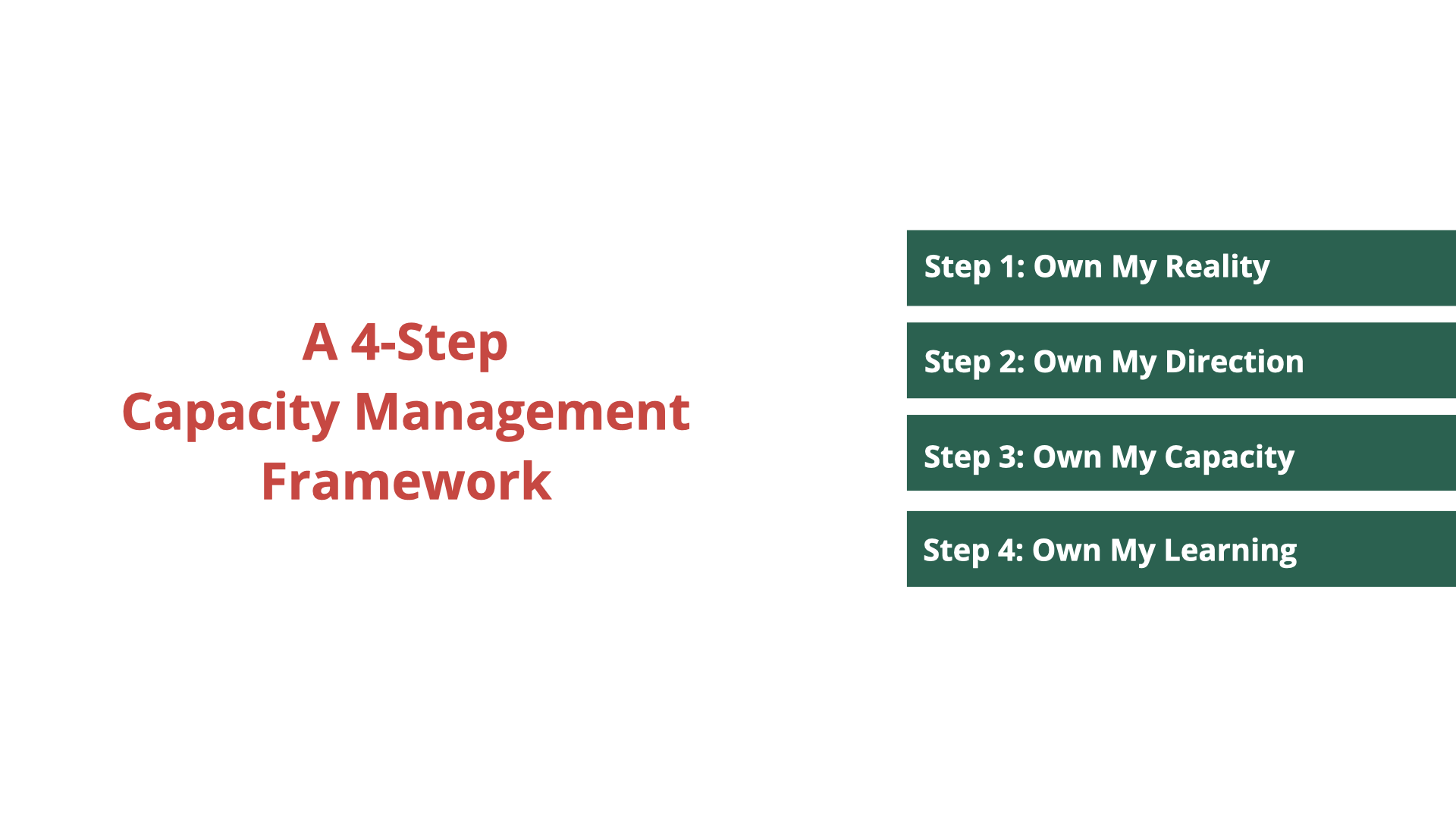
Step 1: Own My Reality
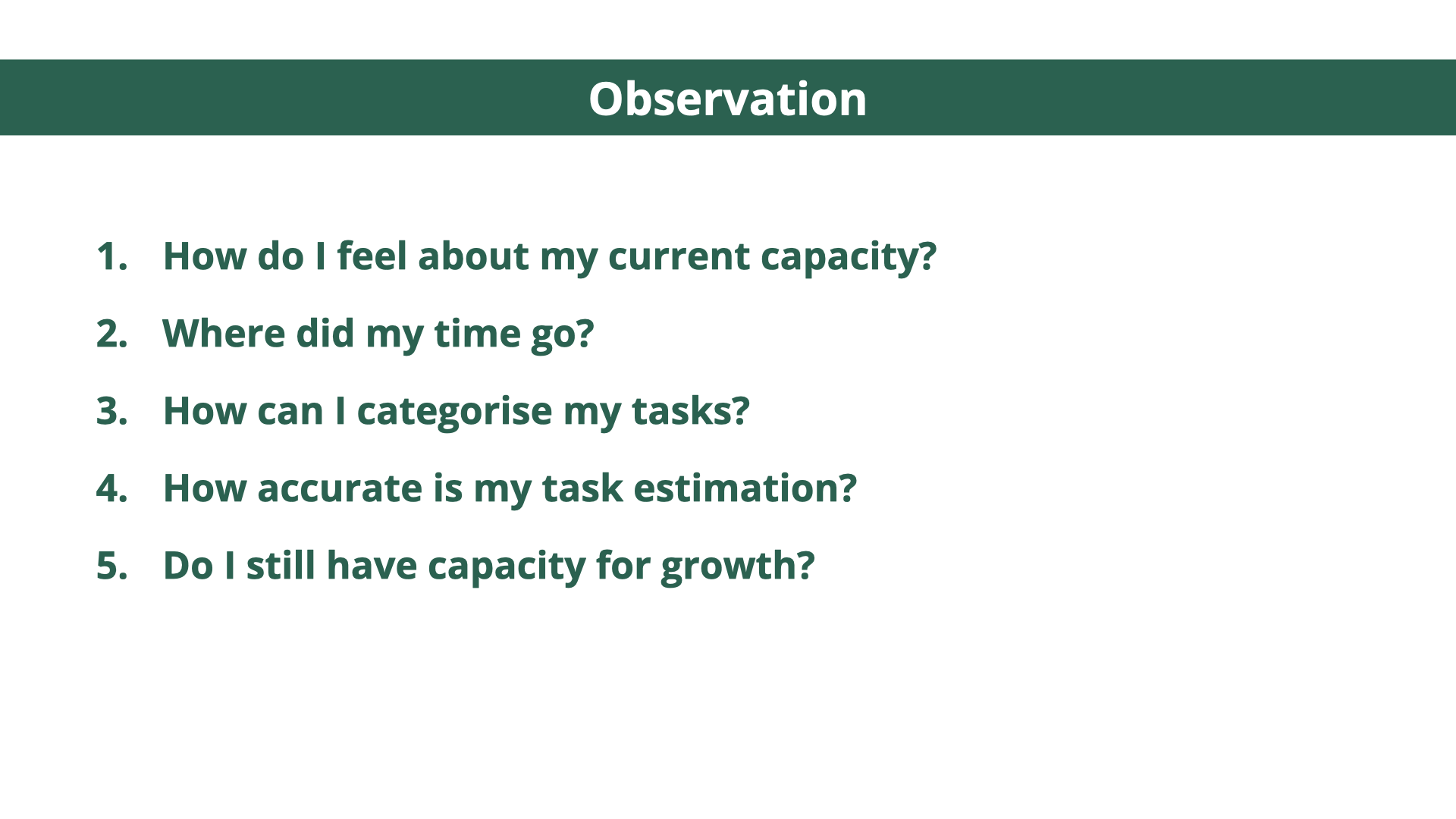
Managing capacity starts with observing its current status. I usually ask myself several questions on a monthly basis or whether I feel I’m stuck.
This is basically a reality check. After reflecting and writing down the answers to these questions, I move to the next step: owning my direction.
Step 2: Own My Direction
Where am I heading? If I continue doing what I’m doing now, will I achieve my goals?
Direction starts with priority alignment, and there are three levels of alignment:
- Personal goals: What do I enjoy in my current role? What makes me happy and fulfilled?
- Manager’s & Team’s priorities: What are the things I can contribute to achieving team goals?
- Company direction: Am I contributing to the organization’s growth and strategies?
Moreover, our priorities should be pragmatic and executable, even the most ambitious goal needs to be broken down into manageable pieces.
Keeping these three levels of priorities aligned is crucial because, with limited capacity, the worst thing we can do is bark up the wrong tree. Bear in mind that the alignment of priorities is a continuous process because things are changing rapidly in today’s world. As long as we remain flexible and curious, we’ll get our priorities right.

Step 3: Own My Capacity
Once I have done my reality check and decided on my priorities, I conduct a time gap analysis by asking myself two questions.
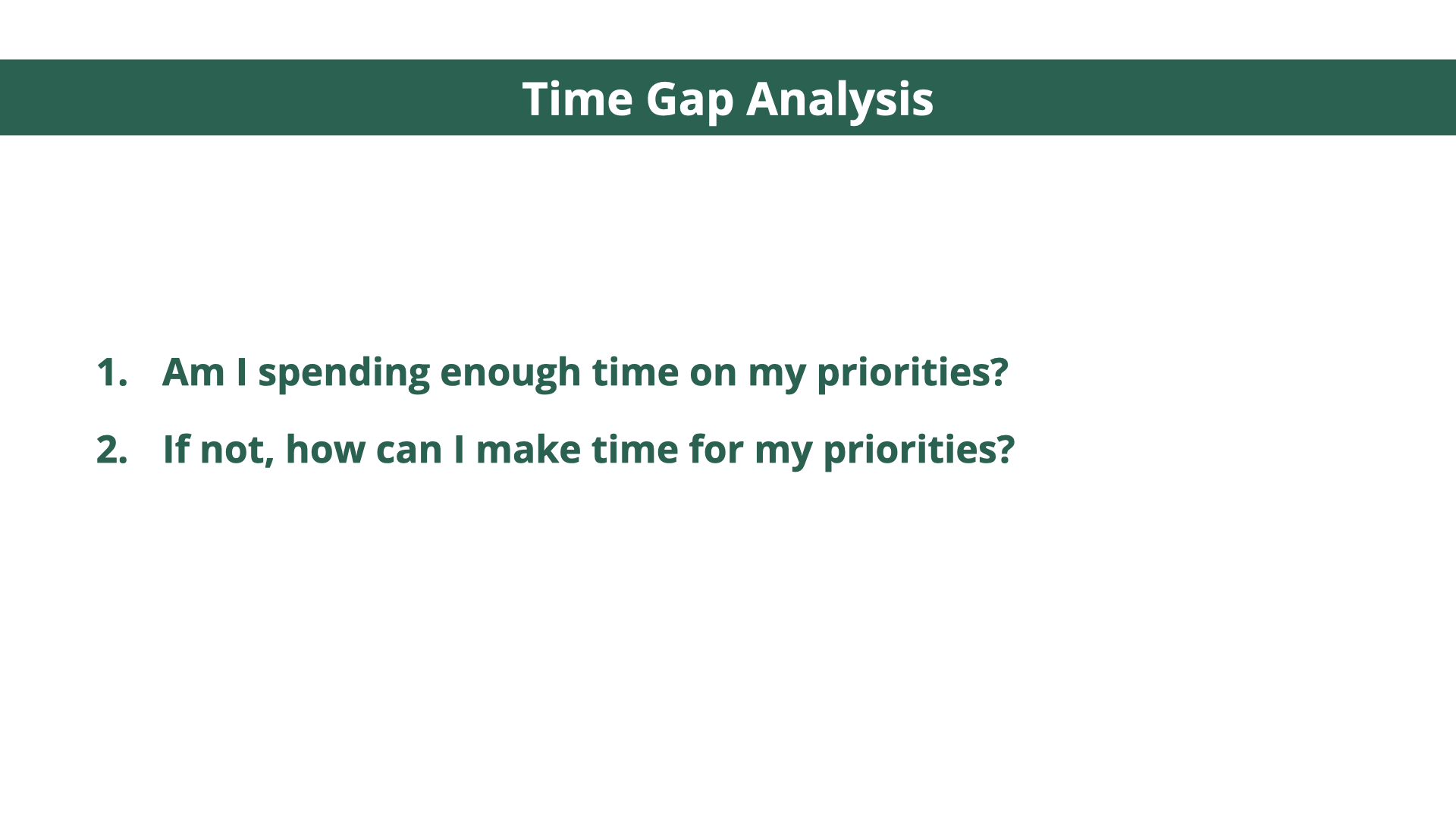
Bus Factor Analysis
Bus factor analysis is a useful tactic if I constantly find myself as the bottleneck to moving things forward. Whenever I notice a bottleneck issue, I ask myself two questions:
- Should I be the bus factor? Sometimes, not all the responsibilities are shareable, and we cannot eliminate the bus factor issue, at least for now.
- If not, is there a way to “duplicate” myself?
Believe it or not, being the bus factor too long can actually impact our career growth. For example, if I’m already good at the things I’ve been doing, the marginal benefit will eventually vanish because I won’t have enough capacity for my growth. On the other hand, handing it over might create a growth opportunity for others.
Of course, I probably need to spend some time training others to make sure things are still running smoothly.
Training and knowledge sharing is another topic on its own, I find that if a process is too complicated for others to understand and replicate. Instead of spending more time reminding or training people, I should probably do something else.
Usually, the answer is “simplify”. Removing the unnecessary complexity of the system makes training and knowledge sharing much easier and more efficient.
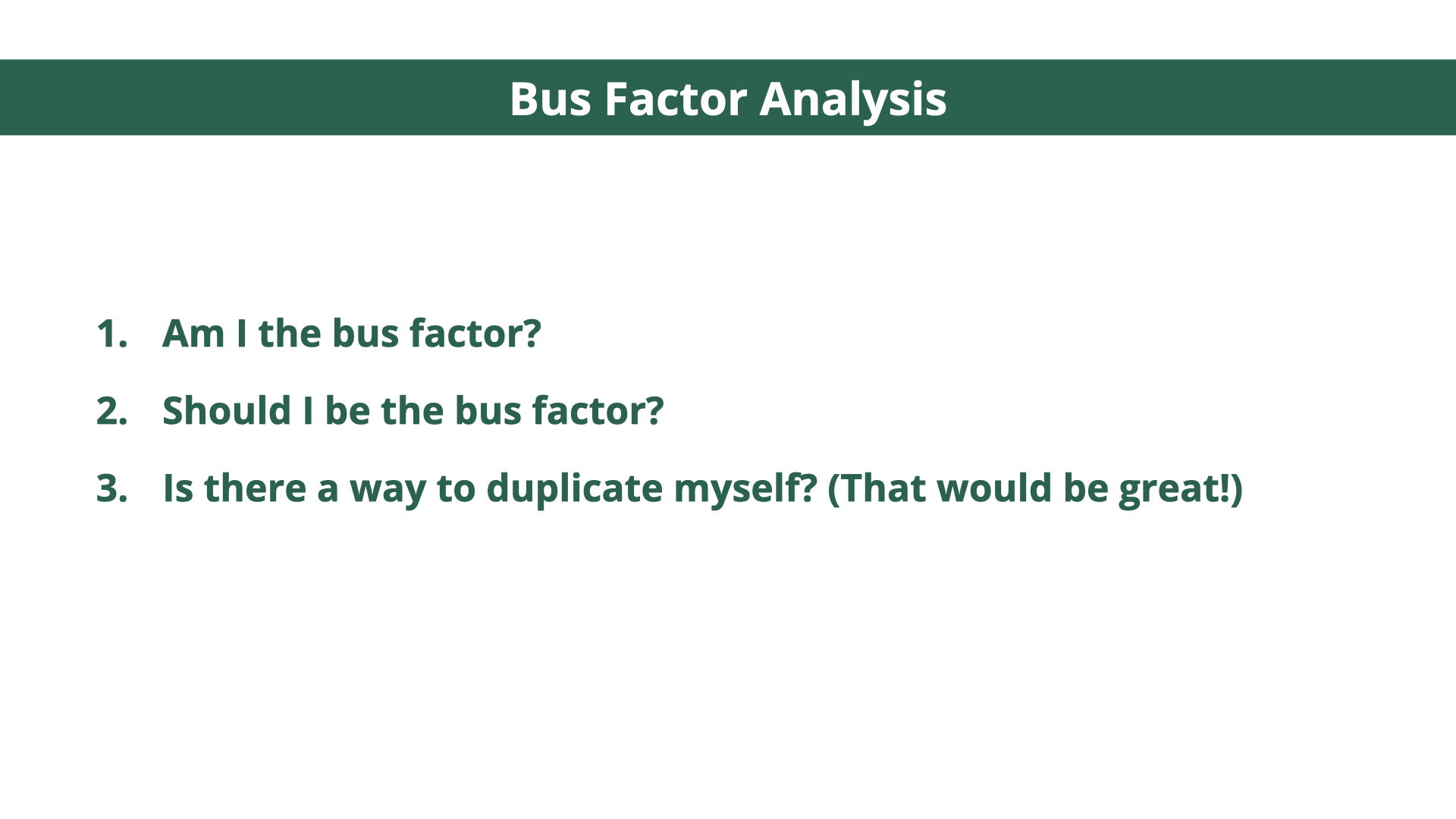
Own My Calendar
Another technique I’ve been trying out is taking control of my calendar. I always try to batch similar tasks on the same day, so I can concentrate on one theme. The “daily theme” technique helps reducing distractions, and ultimately leads to a better outcome.
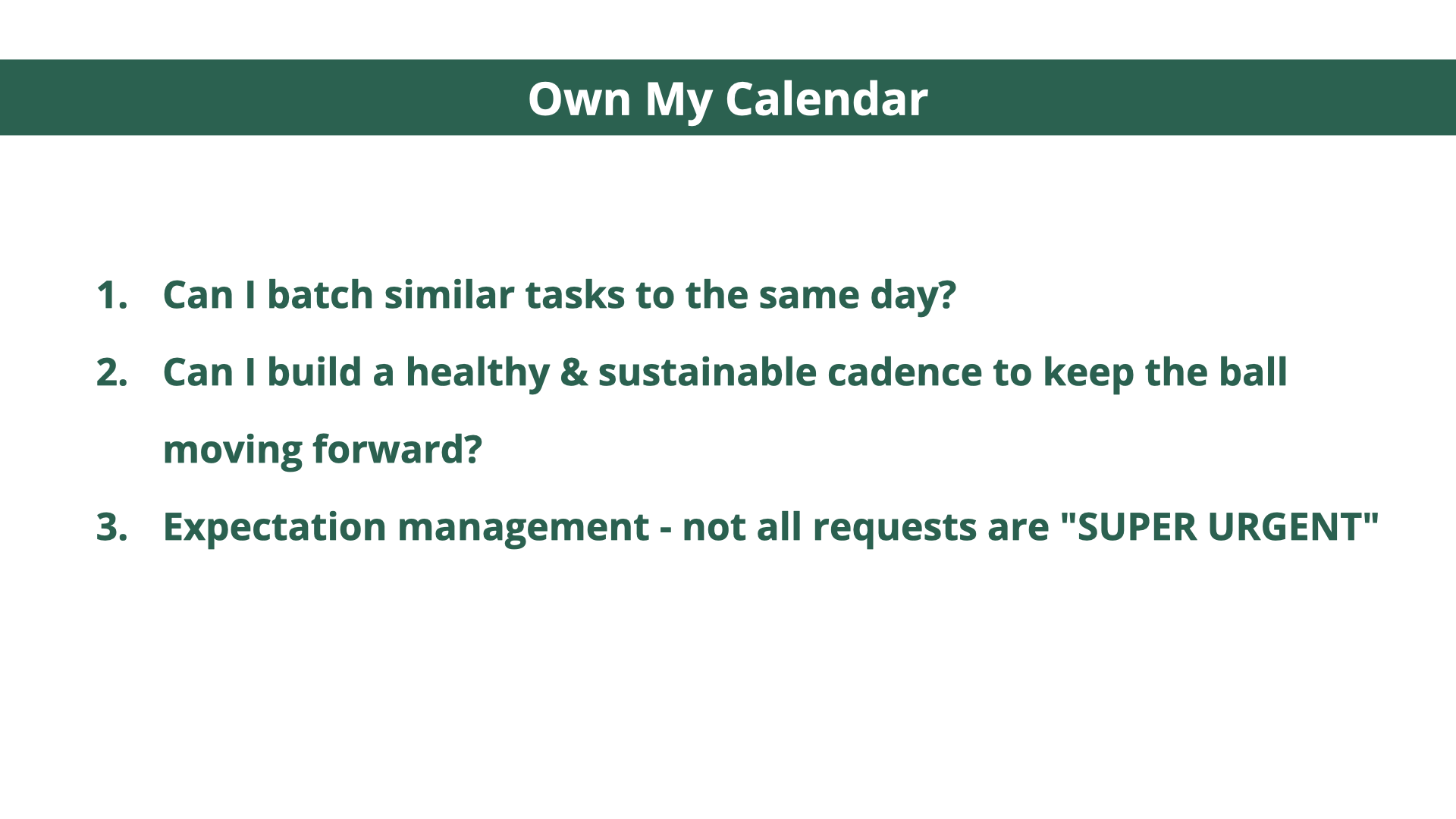
Meetings
Meetings are useful if conducted with the right approach. For all the meetings in my calendar, I ask myself the following questions to make the meeting time more useful.
Sometimes I have to cancel some of the meetings that I’ve scheduled because the purpose is obsolete and I don’t feel it’s the best way to use other people’s time.
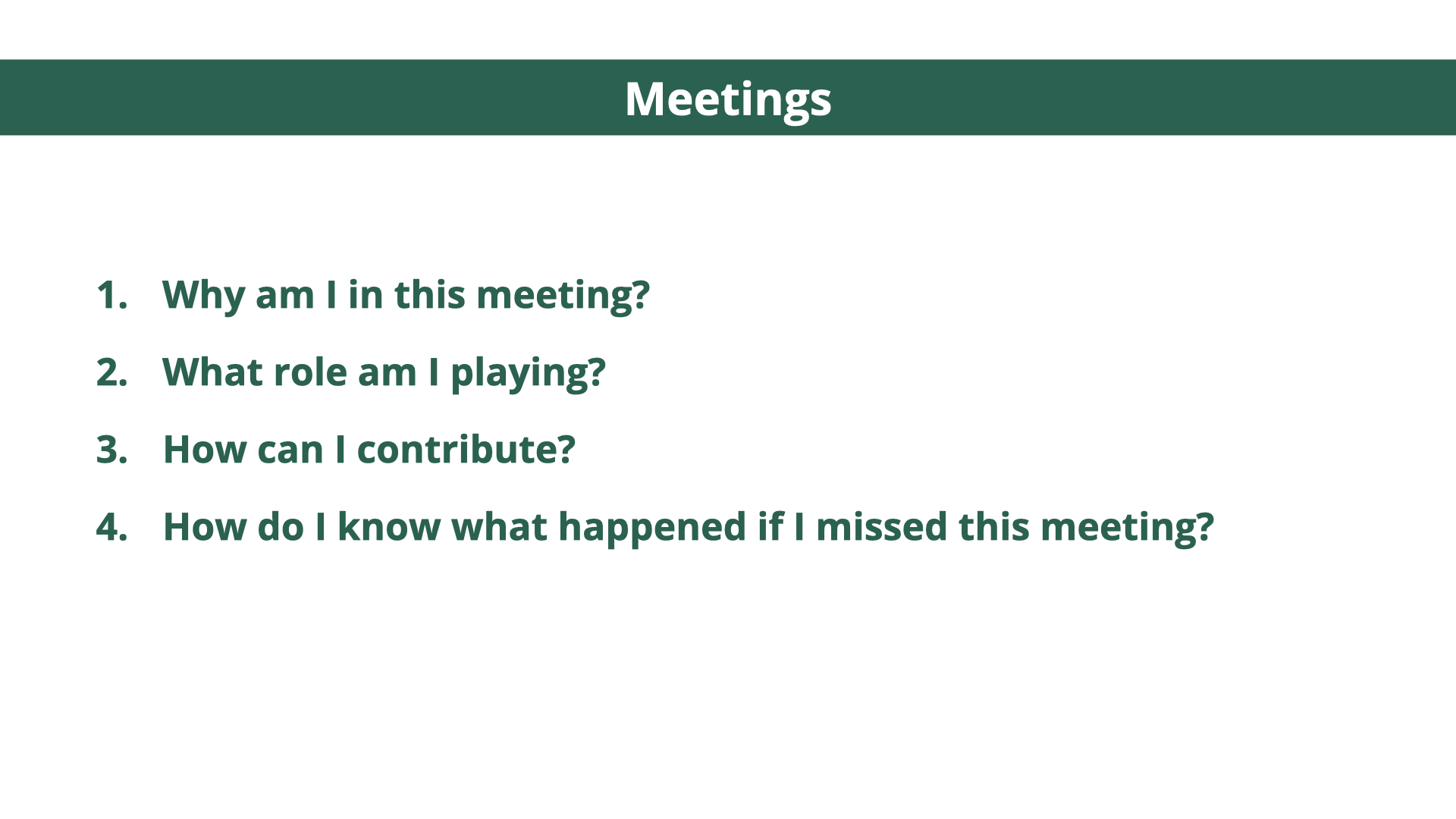
Step 4: Own My Learning
The last step in the framework is “Own My Learning”. At the end of each cycle, which usually follows a calendar month, it’s essential for me to take some time to pause and reflect before moving on. This pause allows me to evaluate how things went during the previous cycle and make any necessary adjustments.
During the reflection, I celebrate wins and summarise the learnings, ask if my priorities need to be updated or if I need to change something else to adapt to the new reality. Maybe unexpected events impacted my progress, and I need to reassess my plan. It’s also possible that nothing needs to change, and I can continue doing what I’ve been doing.
Organizing my thoughts and learnings from the previous cycle helps me get ready to kick off the next cycle with a clear mind.
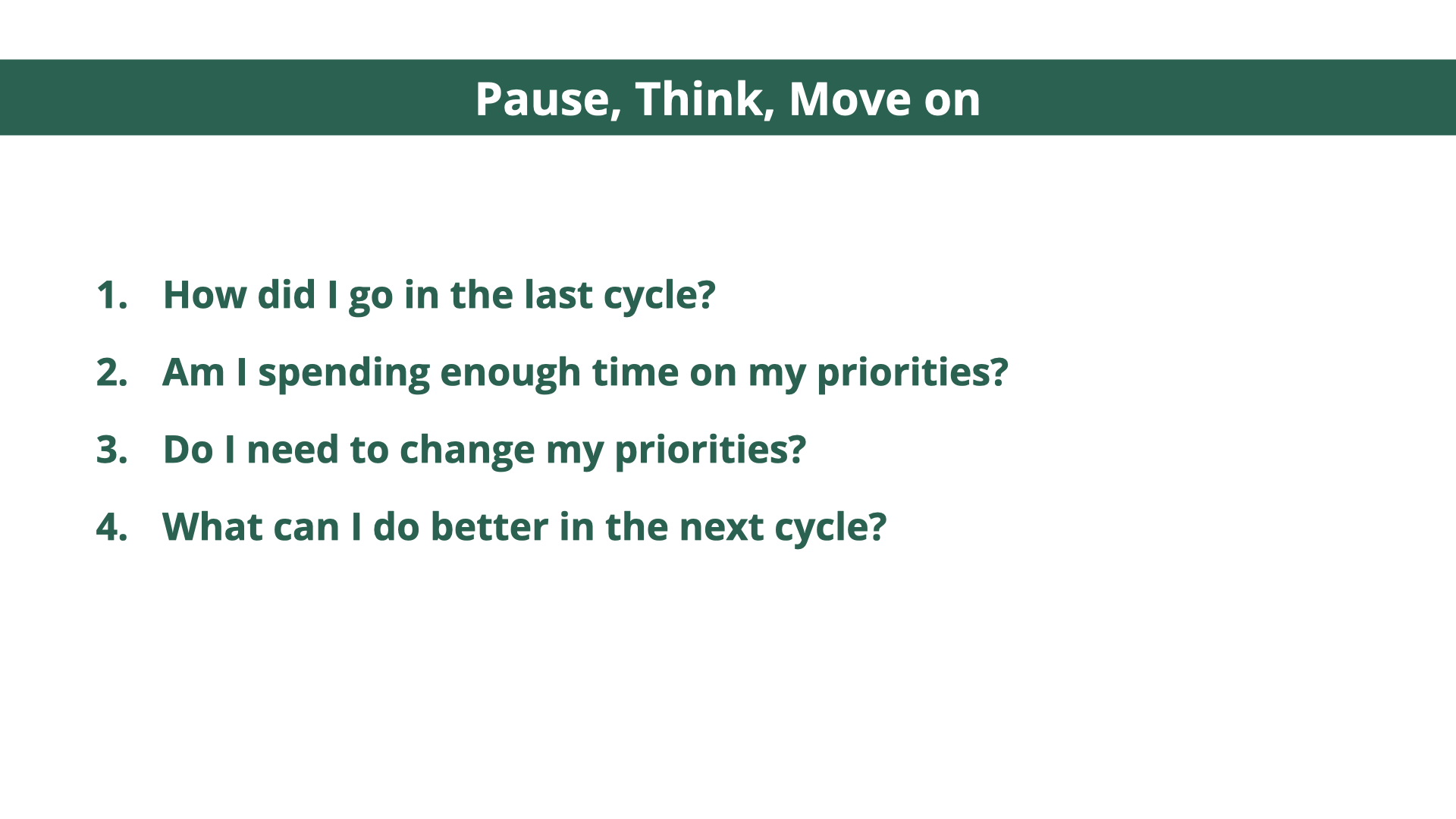
Summary
This framework is not perfect, and it may not be suitable for everyone. Its primary purpose is to address capacity problems at work and ensure that we’re not just growing older each day without making progress.
I hope you find some of these tips useful and can apply them to your own work life.
Talk to Luna
Support Luna




